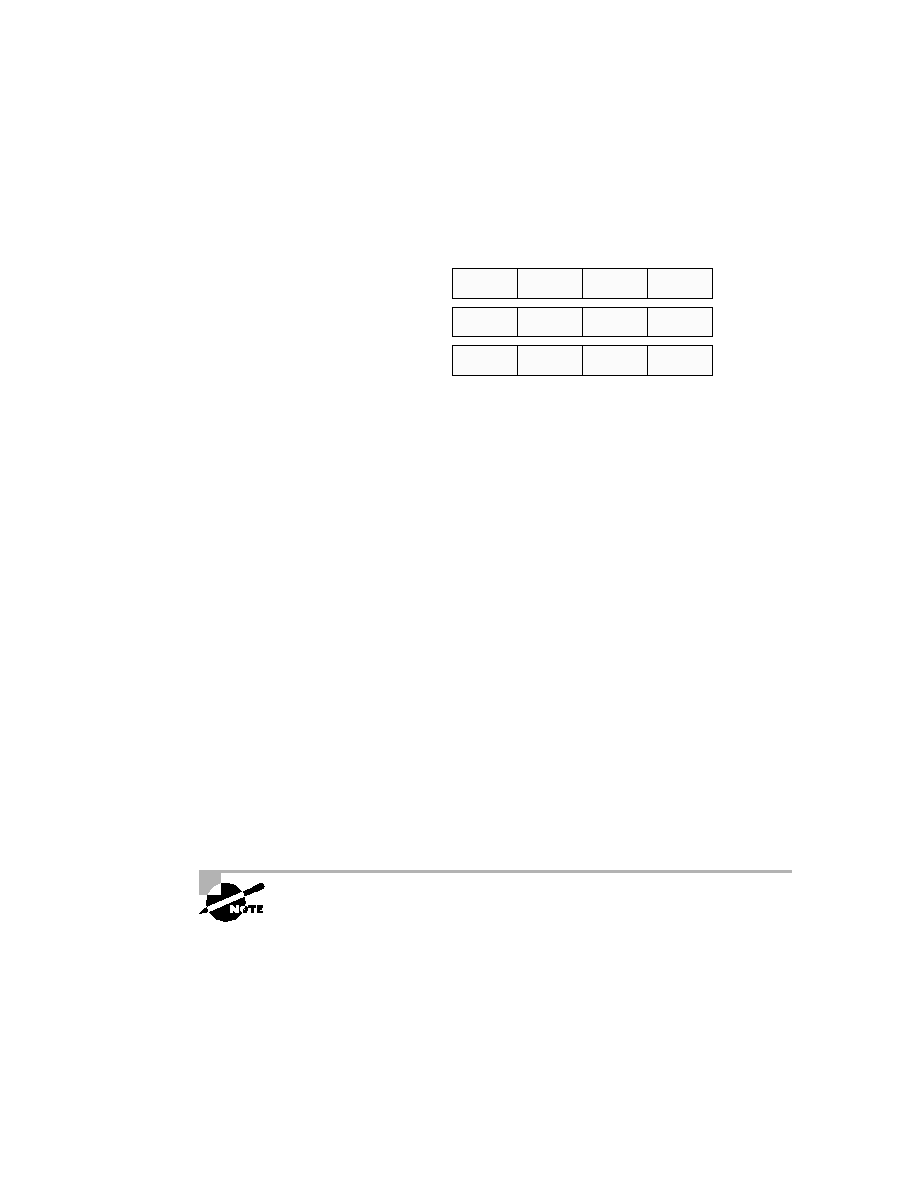
IP Addressing
139
F I G U R E 3 . 1 0
Summary of the three classes of networks
To ensure efficient routing, Internet designers defined a mandate for the
leading-bits section of the address for each different network class. For
example, since a router knows that a Class A network address always starts
with a 0, the router might be able to speed a packet on its way after reading
only the first bit of its address. This is where the address schemes define the
difference between a Class A, Class B, and Class C address.
Network Address Range: Class A
The designers of the IP address scheme said that the first bit of the first byte
in a Class A network address must always be off, or 0. This means a Class A
address must be between 0 and 127.
Consider the following network address:
0xxxxxxx
If we turn the other 7 bits all off and then turn them all on, we'll find your
Class A range of network addresses:
00000000 = 0
01111111 = 127
So, a Class A network is defined in the first octet between 0 and 127, and
it can't be less or more. (I'll talk about illegal addresses in a minute.)
If you are having any difficulty with the binary-to-decimal conversions, please
read the "Binary-to-Decimal Conversion Review" sidebar.
Network
Host
Host
Host
Network
Network
Host
Host
Network
Network
Network
Host
Multicast
Research
Class A:
Class B:
Class C:
Class D:
Class E:
8 bits
8 bits
8 bits
8 bits
Copyright ©2002 SYBEX, Inc., Alameda, CA
www.sybex.com
